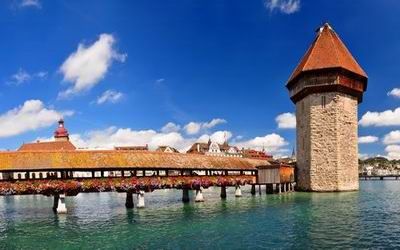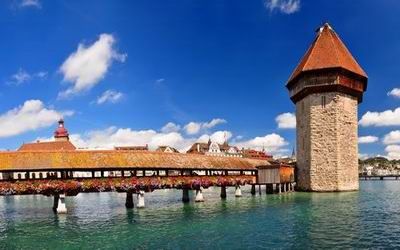|
Reading Passage 2
|
|
|
Title:
|
鳄鱼的进化the crocodile’s evolution
|
|
Question types:
|
段落大意 Heading
填空
配对
|
|
文章内容回顾
|
详细讲述了crocodiles的生活习惯,如何控制自己的温度以及喜欢的生存环境等。包括提到鳄鱼的特点、历史以及对两组处在不同水供给环境下的生存情况对比。
旧文P2=V09121
|
|
英文原文阅读
|
Early and extinct forms of crocodiles are called Crocodilia. They descended from psuedosuchians who walked on their hind legs, and lived during the late Triassic period. The skull of the crocodile still resembles in many ways those of the primitive archosaurs. Their bodies, however, developed the external appearance of the phytosaurs because of their aquatic lifestyle. The crocodile is the only archosaur that survived the still unknown factors that wiped out most of the reptile class at the end of the Mesozoic period. Though modern crocodiles walk on 4 legs, their two legged ancestry is revealed by their hind legs which are longer than the front legs, making them slant forward when they stand. The crocodilian skull still carries a basically archosaurean shape. It has a rather long, pointed skull, especially in the fish eating species of crocodiles.
The biggest, most prominent change in the crocodile since its early days is to the palate. The palate is the flat bony part at the roof of the mouth. In phytosaurs, the nostril holes in the palate are located under the outer nostrils, which were shifted to the far back of their snout. However in crocodiles, the nostrils are located at the front of the snout. This caused a problem in keeping the breathing passages from filling with water. Millions of years of evolution solved this problem. A second palate was formed, channeling the air above the mouth and into the throat passageway, where it can be opened and closed by a special flap or valve of skin. Crocodiles are actually classified on the basis of how far back their secondary palate extends, ranging from those who have no secondary palate to those with a fully formed palate separating the air they breathe from the water in their mouths.
The first crocodilians were called Protosuchians, living during the late Triassic to early Jurassic times. The difference between these and modern crocodiles is in the legs. The Protosuchians had very strong overdeveloped legs, which were set at right angles to the body. These allowed the animal to carry itself higher off the ground and probably gave them much more speed than their modern day counterparts. These legs also lead scientists to believe that these reptiles mostly lived on land. Beginning in the Jurassic period, the crocodilians quickly filled the gap of the extinct phytosaurs, becoming large and fully aquatic reptiles. The Mesosuchians were the next evolution of the protosuchians and lived during the Jurassic period and beyond. These reptiles had not yet developed a secondary palate, but were much more adapted to aquatic life than its predecessor. They had strong armor plating, made from a series of paired large bones on their back with smaller plates on its undersides. They spread throughout the land and lived in fresh water, though some adapted for sea life. These were called Geosaurs. Geosaurs lost their bony armor, their legs modified into paddles and their tail tips turned down, similar to the ichthyosaurs. Our modern crocodile appeared during the Cretaceous period, living side by side with the Mesosuchiansun until they were displaced in the early Tertiary times.
|
|
题型难度分析
|
Heading题考察skim能力,难度不大,但得分率不高。
|
|
题型技巧分析
|
标题配对题(List of headings)是雅思阅读中的一种重要题型,要求给段落找小标题。它一般位于文章之前,由两部分组成:一部分是选项,另一部分是段落编号,要求给各个 段落找到与它对应的选项,即表达了该段中心思想的选项,有时还会举一个例子。当然,例子中的选项是不会作为答案的。
解题思路:
1. 将例子所对应的选项及段落标号划去
2. 划出选项中的关键词及概念性名词
3. 浏览文章,抓住各段的主题句和核心词(尤其是反复出现的核心词),重点关注段落首句、第二句与末句
4. 与段落主题句同义或包含段落核心词的选项为正确答案
|
|
剑桥雅思推荐原文练习
|
剑7 Ant Intelligence
|
2013雅思考试真题:2013.2.16雅思阅读考试Passage2回顾与点评
【 liuxue86.com - 雅思真题 】
想了解更多雅思真题网的资讯,请访问: 雅思真题
本文来源:https://ielts.liuxue86.com/i/1046898.html看过《2013雅思考试真题:2013.2.16雅思阅读考试Passage2回顾与点评》的人还看了以下文章
- 2020年1月16日雅思考试真题答案01-19
- 2020年1月16日雅思写作考试真题答案01-19
- 2020年1月16日雅思阅读考试真题答案01-19
- 2020年1月16日雅思口语考试真题答案01-19
- 2020年1月16日雅思听力考试真题答案01-19
- 2020年1月11日托福阅读考试真题答案01-13
- 2020年1月11日雅思考试真题答案01-13
- 2020年1月11日雅思写作考试真题答案01-13
- 2020年1月11日雅思阅读考试真题答案01-13
- 2020年1月11日雅思口语考试真题答案01-13
延伸阅读
最新一期的雅思考试的结果已经出来了,那么对自己的分数有没有信心呢?就来跟着出国留学网看一看2020年1月16日雅思写作考试真题答案。小作文类型:柱图,结婚率对比大作文Youshou
2020-01-19
最新一期的雅思考试的结果已经出来了,那么对自己的分数有没有信心呢?就来跟着出国留学网看一看2020年1月16日雅思阅读考试真题答案。Passage1:文章题材:说明文(生物类)文章
2020-01-19
最新一期的雅思考试的结果已经出来了,那么对自己的分数有没有信心呢?就来跟着出国留学网看一看2020年1月16日雅思口语考试真题答案。考试真题暂未公布,先看看雅思口语考试有几个部分?
2020-01-19
最新一期的雅思考试的结果已经出来了,那么对自己的分数有没有信心呢?就来跟着出国留学网看一看2020年1月16日雅思听力考试真题答案。Part1:海岛旅游1.bringmorecas
2020-01-19
一月上旬的托福考试已经顺利落幕,大家对考试的结果想必是非常的关心的吧,不妨先来和出国留学网的小编看一看2020年1月11日托福阅读考试真题答案。阅读篇章Agroupofwellde
2020-01-13
最新一期的雅思考试完美结束,考试的题目和答案肯定是大家非常关注的内容。今天就跟着出国留学网一起来看看2019年2月14日雅思考试真题回忆版。2月14日雅思听力回忆Section1:
2019-02-14
- 最新资讯
- 编辑推荐
- 推荐访问





